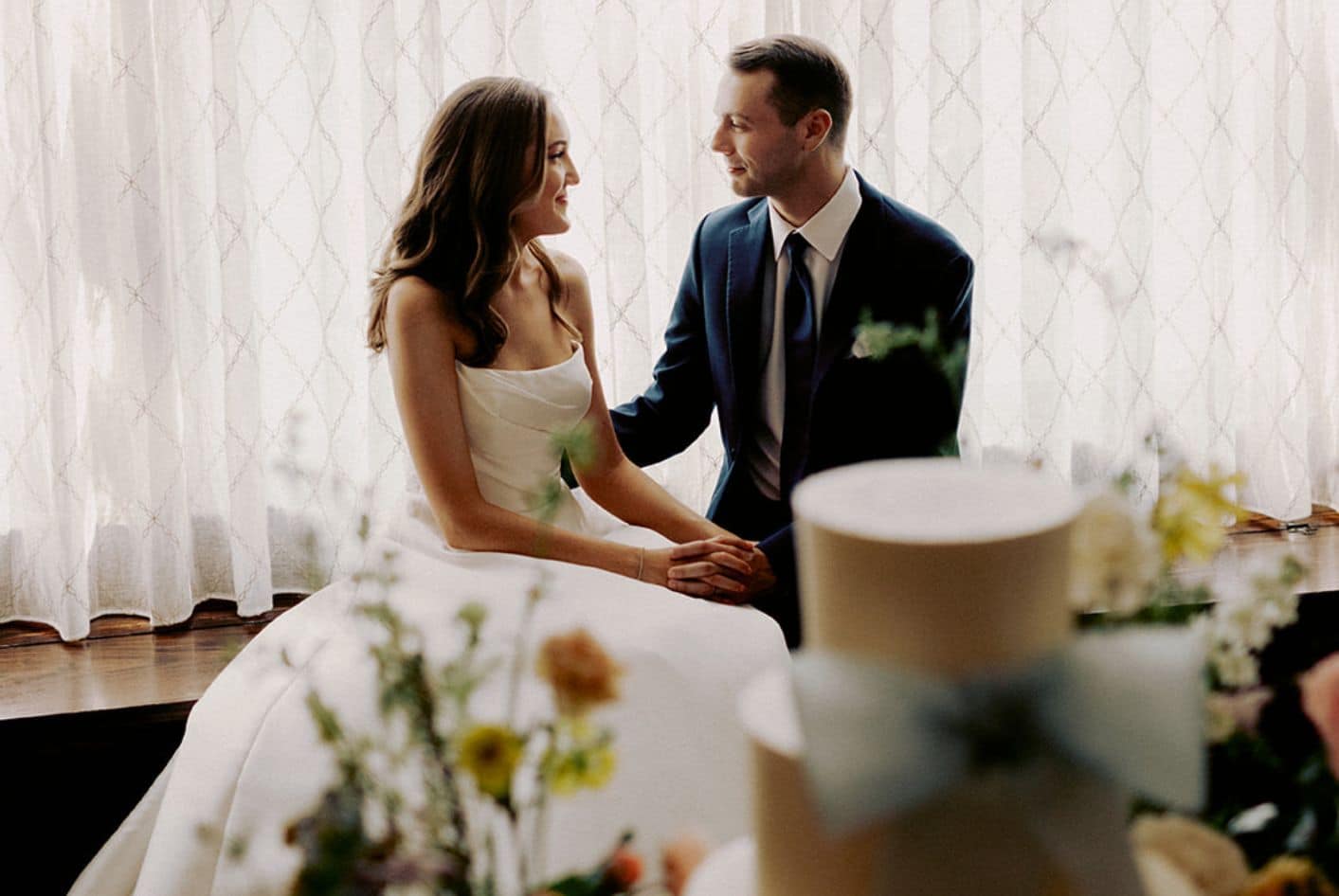Choosing Marriage
by Cadey Phipps, MMFT
If I’m being honest, I haven’t always known if I wanted to get married or not. Here’s (part of the reason) why.
As much as I love the romanticism of the idea of “soulmates” and “the ONE”, the reality is that there are a hell of a lot of people in this world. Ex-NASA roboticist Randall Munroe calculated that there are approximately 5,000,000,000 people, living or dead, who are statistically likely to satisfy your “soul mate” criteria. That’s a whole lot of people.
Modern advances in technology (the internet, cell phones, dating apps, social media) have made it quite easy to become connected to more of these potential partners. All of these options have their benefits, but also make modern dating more complicated and more confusing*.
Times Have Changed
Think about it. 50 years ago, if you got married, you weren’t able to simultaneously keep tabs on an ex while also scoping out other potential partners online – intentionally or not. Today you can. 50 years ago you also weren’t constantly comparing yourself to the happy snapshots of everyone else’s relationship that they post online. Today we are. This leads to an all-too-common game of comparisons and assumption of, “they look so happy and in love, so why aren’t we like that?” It’s difficult to sort through the facades of “perfect” looking relationships and know who is actually struggling underneath all of the filters and sweet captions.
We’ve created a modern dating world that cultures an ADD-like response, making it difficult to feel satisfied and totally sure that we’re with the right person. Our arousal templates have become accustomed to, if not dependent upon, novelty and changing partners, and we have access to our options at all times.
ON TOP OF ALL OF THIS, people often forget that (at least according to Helen Fisher**) love has three stages: lust, attraction, and attachment. Most people think that these first two stages (lust and attraction) feel the best. Those are the giddy, romantically and sexually charged and exciting stages. The 3rd stage of love – attachment – is the longest lasting and is often times a lot less “exciting”, yet often times people assume being in love should feel like being in lust.
Misplaced Expectations
It is easy to see, then, why people’s expectations of what love and marriage should feel and be like may be skewed. No one talks (or posts) about the mundane stuff that makes a relationship or the times that they noticed someone other than their spouse or partner was attractive.
Far too often I have clients and friends come to me concerned that they’re in the wrong relationship because the butterflies (AKA lust and attraction stages full of raging hormones) have faded. We don’t talk about the fact that this progression is completely normal. No wonder so many people get divorced or engage in extramarital affairs. No wonder that the idea of getting married can seem intimidating.
Part of this is more normalization and real talk. Being married doesn’t mean we will never notice another attractive person ever again. It also doesn’t mean that you’re going to be attracted to your partner all of the time. But what it does mean is that we get to choose to maintain boundaries and prioritize our partner. We choose our partner over the exciting feelings of novelty, lust, and attraction to other people. Sometimes we’re even lucky enough to learn how to incorporate the human need for novelty and excitement into our strong and steady long-term relationships.***
And then we reap the benefits. Attachment and commitment is beautiful. It’s secure, it’s safe, it’s deep. But finding a person that you’re willing to get past the butterflies with… it’s a choice.
Marriage is a choice.
I mean that in several ways. Not only are we choosing the action of getting married, but marriage is also choosing that person on the day you marry and every day from then on. This may sound simple, but for me it was a realization that was both profound and comforting in its simplicity.
The reality is, our bodies can only sustain those surges of testosterone, dopamine, estrogen, norepinephrine and depletion of serotonin responsible for lust and attraction in our bodies for 12-18 months. I’m sure about now some of you may be thinking, “I don’t know… What about those people I know that have been hopelessly and giddily in love for 50 years?” That’s great! What they have been doing is choosing each other for the last 50 years. Choosing to cultivate their relationship. Choosing to put that effort in and not become roommates or bystanders in their own love story. All of that choice is what makes the other part come naturally, and this is exactly what I’m talking about.
What will you choose?
What are you willing to do when those lovey dovey feelings come and go the more you get to know your partner? Would you be willing to still choose them? Choose them for emotional and physical connection. Choose to share your life with them. Choose to be faithful and not act on fleeting attractions to other people. Choose to be kind. Choose to build a life with this person, and continue to make choices to make it the best life it can be. Choose to do things together to recreate the hormone-driven early days of your relationship.
Because when you choose marriage, you’re choosing to make your partner “the one” for you.
I could talk about this all day. Contact me to schedule a session or to explore these concepts more.
Cadey Phipps, MMFT | E-mail: [email protected] | Phone: 317-691-5214 | Web: www.cadeymmft.com
ABOUT THE AUTHOR: Cadey Phipps, MMFT, is a temp-licensed professional offering individual and couples’ therapy in Middle Tennessee. Cadey came into this field with a passion for helping, and has discovered an even deeper passion for helping those in life stages similar to her own. Thus she specializes in working with young adult women and couples figuring out how to navigate next steps in their lives and/or relationships i.e. those who are considering or have recently gotten engaged, moved in together, and/or married – among many other life changes. Cadey enjoys applying realistic, relatable, and research-based strategies to help clients normalize struggles and concerns as well as to promote individual and relational growth.
*read more about multiphrenia here
**read more about the 3 stages of love here
***more on this by Esther Perel – follow her on Instagram, listen to her podcast, or read her books “Mating in Captivity” and “The State of Affairs”







